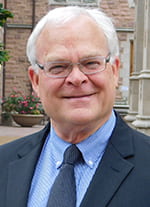New research from the Center for Social Development shows that a children’s account policy reduces obstacles to higher education.

As the cost of higher education continues to grow, families in the United States struggle to save enough for children’s education. State 529 college savings plans are investment vehicles that assist families in meeting this need, but many 529 plan accounts are held by wealthy households.
New results from the long-running SEED for Oklahoma Kids (SEED OK) experiment show that 529 policy can be transformed by a universal Child Development Account (CDA) policy so that every child, even those in the poorest families, accumulates assets for their education. The experiment includes automatic at-birth CDA enrollment, a substantial seed investment, and a supplemental deposit with more for the most disadvantaged.

“This illustrates the importance of an automatic and substantial initial investment,” said Michael Sherraden, the George Warren Brown Distinguished Professor at Washington University and founding director of the Center for Social Development. “We are now demonstrating an effective and sustainable CDA policy structure – a key achievement – but our goal is a much larger initial deposit, especially for children in the most disadvantaged families.”
The findings are presented in a new Fact Sheet by Margaret Clancy, Sondra Beverly, Mark Schreiner, Jin Huang, and Sherraden, who analyzed savings data from December 31, 2021, when the CDA beneficiaries were 14 years old. Data come from the account manager of Oklahoma 529 College Savings Plan (OK 529).

The results show that the CDAs in the SEED OK experiment eliminate disparities in OK 529 asset holding by race, household income, and maternal education. These Oklahoma children with CDAs have almost three and a half times more assets relative to counterparts without CDAs. After 14 years, the average total OK 529 savings for a beneficiary has grown to $4,373.
An initial per-child deposit of $1,000, made in 2007 into the SEED OK CDA, fell during the Great Recession, then grew steadily to approximately $2,300 by the end of 2021. The investment mix adjusts as the children age.
For the experiment, the researchers randomly selected a sample of newborns in 2007, assigning some to a treatment group that would receive CDAs and others to a control group. The sample is representative of the full population of Oklahoma families with newborns in that year. The researchers collaborated with the state to open a CDA automatically for babies in the treatment group. SEED OK offered families additional incentives to open and make deposits into their own OK 529 accounts. In 2019, the experiment made additional, progressively structured supplemental deposits into the CDAs, with larger deposits for more disadvantaged youth. The experiment continues to track the savings and beneficiaries.
Collaborations with state officials shaped the implementation and administration of the experiment. “Our 16-year partnerships with the state of Oklahoma Treasurer’s office and the Oklahoma College Savings Plan allowed us to model a policy that has subsequently been legislated in several states,” said Margaret Clancy, policy director at the Center for Social Development and director of the SEED OK experiment.
The CSD research team finds that the CDA increases OK 529 asset holding by 98 percentage points among children of color, children from low-income families, and children whose mothers have low levels of education.
The researchers estimate that about 36,300 low-income beneficiaries would have OK 529 assets if the state had offered a fully universal at-birth CDA policy in 2007.
“This is truly a transformation in 529 policy,” Sherraden said.
The findings also show that the SEED OK CDA has a direct effect on whether parents save for their child’s education, and how much they save. Children with the CDAs are nearly five times more likely to have an OK 529 account opened by their parents, with an average balance among savers of $14,045. Under current policy, only 900 of the low- and middle-income 14-year-olds born in 2007 have parent-owned accounts, but this number would be about 6,200 if the state had offered a fully universal CDA policy at birth in 2007.
“These results from accurate and reliable account data provide a strong research foundation for us to design a national CDA policy for all children, especially for children of color and those in the most disadvantaged families,” said Jin Huang, professor of social work at Saint Louis University and research associate professor in the Brown School at Washington University.
“These results from accurate and reliable account data provide a strong research foundation for us to design a national CDA policy for all children, especially for children of color and those in the most disadvantaged families.”
Jin Huang
The SEED OK experiment has produced an extensive body of scholarship, and the evidence has informed numerous CDA policies. Seven states have adopted statewide CDA policies, others are considering CDA legislation, and a nationwide policy has been proposed. More of the SEED OK evidence informing these policies can be found at the experiment’s home page.
